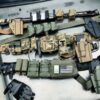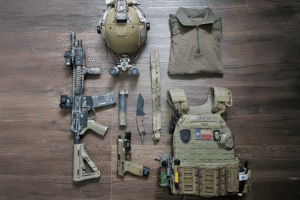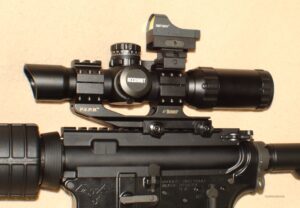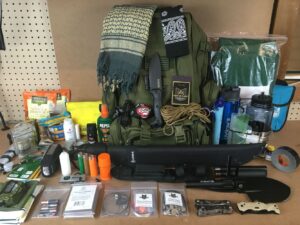Pakistan boasts an incredibly diverse landscape, ranging from the soaring peaks of the Karakoram to the expansive deserts of Sindh and Balochistan, and from lush forests in Khyber Pakhtunkhwa to coastal regions along the Arabian Sea. Such varied terrain offers countless opportunities for camping, hiking, and exploration. However, venturing into the great outdoors requires more than just enthusiasm. Proper gear, knowledge, and preparation can mean the difference between a memorable adventure and a challenging ordeal. In this guide, we will explore the must-have equipment you need to tackle Pakistan’s diverse environments safely and effectively. Whether you’re a seasoned trekker or a first-time camper, these insights will help you assemble a robust survival kit tailored to your needs.
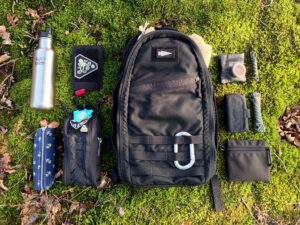
1. Understanding Pakistan’s Terrain and Climate
Before diving into the gear itself, it’s crucial to recognize why Pakistan’s environment demands specialized equipment. The northern areas, like Gilgit-Baltistan, are known for their extreme cold and unpredictable weather, especially at higher altitudes. On the other hand, the southern and western regions can be scorching hot during summers, with temperatures often exceeding 45°C. Coastal regions have high humidity, while certain mountainous areas see heavy rainfall.
These climatic extremes can quickly transform an outdoor excursion into a survival situation if you’re not adequately prepared. Investing in outdoor and camping accessories that suit these specific challenges is essential. For instance, your tent and sleeping bag should be suitable for both high-altitude cold and occasional rainstorms, and your clothing must handle sudden temperature fluctuations. Understanding the terrain and weather patterns ensures you can pack effectively and respond to shifting conditions.
2. The Right Shelter: Tents and Sleeping Arrangements
A sturdy shelter is a cornerstone of any outdoor survival plan. In Pakistan, where weather can shift dramatically within a matter of hours, a high-quality tent is a non-negotiable asset. Look for tents made from durable, waterproof materials, preferably with reinforced seams. Choose a model that can withstand strong winds if you’re venturing into mountainous regions, and ensure it provides adequate ventilation for hotter climates.
- Tent Size and Weight: If you’re backpacking, weight becomes critical. Opt for lightweight yet durable options that won’t weigh you down on steep trails.
- Season Rating: A three-season tent generally suffices for spring, summer, and autumn. For winter treks in places like Naltar or Skardu, consider a four-season tent designed to handle heavy snow and winds.
- Sleeping Bag and Sleeping Pad: Look for sleeping bags rated for the coldest temperatures you expect to encounter. A high-quality sleeping pad not only offers comfort but also insulates you from the cold ground, preventing heat loss.
When you have the right tent and sleeping arrangement, you can maintain a comfortable and secure base camp. This can be further enhanced by tactical bag accessories, which keep your gear organized and accessible.
3. Staying Hydrated: Water Filters and Purification Methods
In many parts of Pakistan, especially remote areas, clean drinking water isn’t always guaranteed. Relying on surface water, such as streams or lakes, can be risky without proper filtration or purification. Waterborne diseases can quickly derail your adventure, leading to dehydration and serious health complications.
- Portable Water Filters: Lightweight, handheld water filters can remove bacteria and protozoa. These are invaluable if you frequently hike or camp.
- Purification Tablets or Drops: Ideal for killing viruses, which many filters do not remove. They’re a good backup to have if your filter malfunctions or the water source is questionable.
- Boiling: Boiling water is a foolproof way to eliminate most pathogens, though it can be time-consuming and fuel-intensive.
Staying hydrated not only keeps you healthy but also supports better decision-making and physical endurance. Given the rugged landscapes and the possibility of heat in lower regions, a reliable water purification system is a lifesaver.
4. Fire Starters: Ensuring Warmth and Cooking Capabilities
Fire serves multiple purposes in a survival scenario. It provides warmth, cooks food, purifies water, and boosts morale. However, starting a fire in damp or windy conditions can be challenging. That’s why carrying multiple fire-starting methods is wise:
- Waterproof Matches: Specially coated matches that ignite even when wet.
- Ferro Rod (Firesteel): Generates sparks by scraping a metal striker against a ferrocerium rod. Extremely reliable and long-lasting.
- Lighters: Lightweight and convenient, though prone to malfunction in cold or wet conditions.
Practicing fire-building techniques before you head out is crucial. Also, always follow local guidelines and environmental regulations to prevent wildfires, especially in dry areas.
5. Navigation Tools: Maps, Compasses, and GPS
Relying solely on smartphone apps for navigation can be risky, especially in remote areas with poor signal coverage. Traditional navigation tools like a compass and a detailed topographic map are invaluable backups. If you opt for a handheld GPS device, make sure you bring spare batteries or a solar charger.
- Compass Skills: Learning how to read a compass and map is a foundational survival skill. It can guide you through unmarked trails or help you find the shortest path to safety.
- Offline Maps: If you’re using a phone-based GPS, download offline maps of the region you’ll be exploring.
- Waypoint Marking: Mark important locations such as campsites, water sources, or vantage points to avoid getting lost and to facilitate quick returns to safe zones.
6. Clothing and Footwear: Comfort and Protection
Your choice of attire can greatly influence your comfort and safety. Tactical Clothing Pakistan often incorporates durable fabrics and functional designs that suit various climates. For footwear, consider the best tactical boots in Pakistan, particularly if you’ll be traversing rocky terrain or need extra ankle support. A good pair of boots can prevent injuries and reduce fatigue.
- Layering: Layered clothing allows you to adjust to fluctuating temperatures. For cooler climates, thermal base layers, an insulating mid-layer (fleece or down jacket), and a waterproof outer layer are recommended.
- Material: Synthetic or wool-based fabrics wick moisture away, dry quickly, and keep you warm even when wet.
- Accessories: Items like gloves, beanies, and quick-dry socks can make a huge difference in your overall comfort. If you’re planning extended treks, pack extra pairs to stay fresh and prevent blisters.
7. Essential Tools: Knives, Multi-Tools, and EDC Gear
Having the right tools on hand can be critical for shelter-building, meal prep, or emergency repairs. A sturdy knife or multi-tool helps you tackle various tasks, from cutting rope to whittling tinder for a fire. Additionally, edc tools (Everyday Carry tools) like tactical pens or small flashlights can be invaluable.
- Fixed-Blade Knife: More robust than folding knives, suitable for heavy-duty tasks like splitting wood.
- Multi-Tool: Usually includes pliers, screwdrivers, and a small knife, offering versatility without adding too much weight.
- Flashlight or Headlamp: Hands-free lighting is essential when setting up camp after dark. Look for waterproof, durable models.
Remember to maintain and sharpen your tools regularly. A dull blade is not only less effective but also more dangerous due to the increased force required to cut.
8. Safety and Self-Defense: First Aid Kits and Gadgets
Outdoor adventures come with inherent risks, ranging from minor cuts and bruises to more serious injuries. Carrying a well-stocked first aid kit is non-negotiable. Include essentials like bandages, antiseptics, pain relievers, and any personal medication. For more advanced care, items like a tourniquet or clotting gauze can be lifesavers, especially in remote areas far from immediate medical help.
In addition to medical preparedness, consider self defense gadgets if you’ll be exploring regions with potential wildlife threats or other hazards. While the hope is to never use them, being prepared can provide peace of mind.
9. Storage and Organization: Backpacks and Accessories
Keeping your gear organized makes your trip more efficient and safer. A high-quality backpack designed for trekking or tactical use offers multiple compartments to separate essential items like first aid, food, and clothing. If you need additional storage solutions, consider tactical backpack accessories that provide extra pouches or MOLLE attachments.
- Pack Weight Distribution: Heavier items should be placed close to your back and centered to maintain balance.
- Waterproof Liners: Even if your backpack is water-resistant, using waterproof stuff sacks or liners can protect clothing and electronics from unexpected rainfall.
- Quick-Access Compartments: Keep items like a map, compass, or flashlight easily accessible so you don’t have to rummage through your entire pack in an emergency.
10. Food and Nutrition: Meal Planning for the Outdoors
Proper nutrition fuels your body, helping you maintain energy levels during strenuous activities. When planning meals, prioritize lightweight, high-calorie foods like energy bars, dehydrated meals, and nuts. If you plan on cooking, pack a compact stove and lightweight cookware. Always research local regulations about campfires and cooking methods, especially in protected areas or during fire bans.
- Calorie-Dense Snacks: Jerky, trail mix, and energy gels are easy to pack and offer quick energy boosts.
- Meal Variety: Incorporate different flavors and textures to avoid food fatigue on longer trips.
- Safe Food Storage: In areas with wildlife, store your food in sealed containers or use bear canisters if necessary.
11. Adapting to Pakistan’s Diverse Regions
Each region in Pakistan poses unique challenges. For instance, the chilly nights in the Kaghan Valley require warmer sleeping gear, while the intense heat in the Thar Desert demands more hydration strategies and sun protection. Coastal areas near Karachi or Gwadar may have higher humidity, so breathable fabrics and mold-resistant gear are beneficial. Researching your specific destination beforehand allows you to tailor your gear to the environment, ensuring you’re neither under- nor over-prepared.
12. Additional Recommendations and Tactical Considerations
For those who want to take their outdoor experience to the next level, specialized gear from a tactical gear store Pakistan can offer durability and functionality. These items often include military belts and buckles for secure load distribution, top combat accessories in Pakistan for advanced defense scenarios, and tactical bag accessories for efficient organization.
If you’re aiming to enhance your personal protection, especially in remote areas, explore self defense gadgets like tactical flashlights with strobe modes or even pepper sprays (where legally permitted). High-quality gear not only boosts safety but also provides peace of mind, allowing you to focus on enjoying your outdoor adventure.
13. Training and Preparation
No amount of gear can compensate for a lack of knowledge or preparation. Familiarize yourself with basic survival skills—fire-starting, first aid, navigation—before embarking on a trip. Practice setting up your tent in a controlled environment to ensure you can do it quickly under less-than-ideal conditions. Similarly, test your water filter and learn how to maintain it.
It’s also wise to inform friends or family about your itinerary and expected return date. In case of an emergency, a trusted contact who knows your route can assist in alerting the authorities. If you’re traveling to remote locations, consider investing in a satellite communicator or personal locator beacon.
14. Ethical and Environmental Considerations
Finally, while enjoying Pakistan’s stunning natural beauty, it’s crucial to minimize your environmental impact. Follow Leave No Trace principles: dispose of waste properly, respect wildlife, and avoid damaging vegetation. Stay on established trails whenever possible, and be mindful of local customs and regulations. By treading lightly, you help preserve these majestic landscapes for future generations.
15. Conclusion
Exploring Pakistan’s vast and varied landscapes can be one of the most rewarding experiences of your life, but it requires careful planning and the right equipment. From reliable shelter and water filtration to edc tools and tactical bag accessories, each piece of gear serves a purpose in keeping you safe, comfortable, and prepared for whatever nature throws your way. Investing in high-quality, top outdoor survival gear in Pakistan not only enhances your safety but also enriches your overall experience, allowing you to immerse yourself in the country’s awe-inspiring beauty without constant worry.
Remember, gear is only part of the equation; knowledge and preparation are equally vital. Take the time to understand the terrain, practice essential survival skills, and always respect the environment. With the right combination of preparation, caution, and top-notch equipment, you’ll be ready to tackle Pakistan’s diverse outdoors and create memories that last a lifetime.



